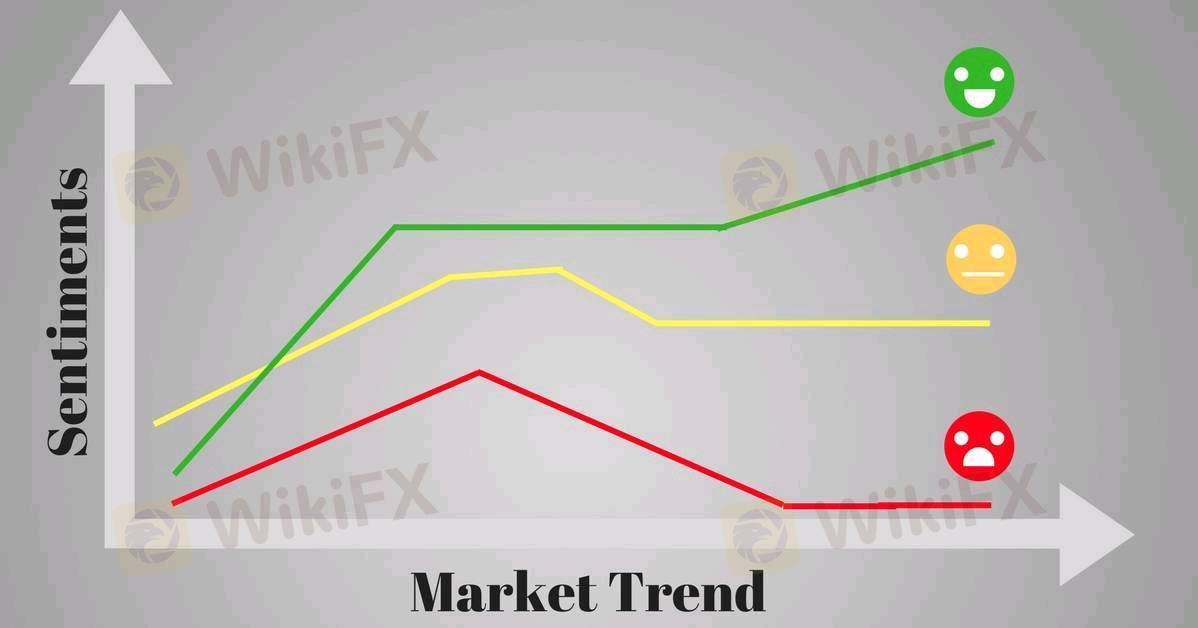
2025-01-31 19:54
业内Sentiment analysis in Forex trading
#firstdealofthenewyearchewbacca#
Sentiment Analysis in Forex Trading
Sentiment analysis in Forex trading involves assessing the overall mood or positioning of traders in the market. It helps traders understand whether most participants are bullish (buying) or bearish (selling) on a particular currency pair.
---
Key Sentiment Indicators in Forex Trading
1. Commitment of Traders (COT) Report
Released weekly by the CFTC, it shows how commercial hedgers, large speculators, and retail traders are positioned.
If large speculators are heavily long on a currency, it signals bullish sentiment; if heavily short, it signals bearish sentiment.
Extreme positions often indicate a potential reversal.
2. Retail Trader Sentiment (Contrarian Indicator)
Many brokers provide retail trader positioning data (e.g., IG Client Sentiment, Myfxbook).
Retail traders tend to be wrong at major turning points, so extreme retail long positions may indicate a sell opportunity and vice versa.
3. Forex Market Sentiment Indexes
Sentiment indicators like DailyFX Sentiment Index, FXSSI, and Speculative Sentiment Index (SSI) provide insights into market positioning.
4. Options Market Data (Risk Reversals & Open Interest)
Options market data, such as risk reversals, can show whether traders are hedging against currency appreciation or depreciation.
High open interest in call options suggests bullish sentiment; high open interest in put options suggests bearish sentiment.
5. News Sentiment & Economic Reports
Analyzing central bank speeches, economic reports, and news headlines can reveal market expectations.
Positive surprises in economic data strengthen sentiment; negative surprises weaken it.
6. Volatility Index (VIX) & Risk-On/Risk-Off (RORO) Sentiment
The VIX (Fear Index) helps gauge risk appetite.
In risk-off environments (high VIX), traders buy safe-haven currencies like USD, JPY, and CHF.
In risk-on environments (low VIX), traders favor riskier currencies like AUD, NZD, and emerging market currencies.
---
How to Use Sentiment Analysis in Forex Trading
1. Identify Extreme Sentiment Levels
If sentiment is too bullish or bearish, it may signal a trend reversal (contrarian approach).
Example: If 90% of traders are long on EUR/USD, there’s a high chance of a price drop.
2. Confirm with Technical & Fundamental Analysis
Sentiment alone is not a trading signal. Combine it with support/resistance levels, moving averages, RSI, and economic data for stronger trade setups.
3. Trade with the Trend or Against It (Contrarian Strategy)
Trend Followers: If large institutions are increasing long positions, trade in the same direction.
Contrarian Traders: If retail traders are excessively long, consider shorting.
---
Example of Sentiment-Based Trade Setup
COT Report: Shows large speculators heavily short USD/JPY.
Retail Sentiment: 80% of traders are long (contrarian sell signal).
Technical Analysis: USD/JPY is at resistance.
Fundamental Analysis: BoJ signals policy tightening, supporting JPY strength.
Trade Idea: Short USD/JPY with a stop above resistance.
赞 0
bossbaby6527
交易者
热门讨论
业内
哎,现在明白不赌就是赢啊
行情分析
美元/加元技术面
技术指标
外汇技术分析之波浪理论
业内
[活動]論交易,贏取200元話費補貼
技术指标
EZ.Fury Kite是基于趋势指标MA进行判断
技术指标
指标派是什么?
集市分类

平台

展会

IB

招聘

EA

业内

行情

指标
Sentiment analysis in Forex trading
 尼日利亚 | 2025-01-31 19:54
尼日利亚 | 2025-01-31 19:54#firstdealofthenewyearchewbacca#
Sentiment Analysis in Forex Trading
Sentiment analysis in Forex trading involves assessing the overall mood or positioning of traders in the market. It helps traders understand whether most participants are bullish (buying) or bearish (selling) on a particular currency pair.
---
Key Sentiment Indicators in Forex Trading
1. Commitment of Traders (COT) Report
Released weekly by the CFTC, it shows how commercial hedgers, large speculators, and retail traders are positioned.
If large speculators are heavily long on a currency, it signals bullish sentiment; if heavily short, it signals bearish sentiment.
Extreme positions often indicate a potential reversal.
2. Retail Trader Sentiment (Contrarian Indicator)
Many brokers provide retail trader positioning data (e.g., IG Client Sentiment, Myfxbook).
Retail traders tend to be wrong at major turning points, so extreme retail long positions may indicate a sell opportunity and vice versa.
3. Forex Market Sentiment Indexes
Sentiment indicators like DailyFX Sentiment Index, FXSSI, and Speculative Sentiment Index (SSI) provide insights into market positioning.
4. Options Market Data (Risk Reversals & Open Interest)
Options market data, such as risk reversals, can show whether traders are hedging against currency appreciation or depreciation.
High open interest in call options suggests bullish sentiment; high open interest in put options suggests bearish sentiment.
5. News Sentiment & Economic Reports
Analyzing central bank speeches, economic reports, and news headlines can reveal market expectations.
Positive surprises in economic data strengthen sentiment; negative surprises weaken it.
6. Volatility Index (VIX) & Risk-On/Risk-Off (RORO) Sentiment
The VIX (Fear Index) helps gauge risk appetite.
In risk-off environments (high VIX), traders buy safe-haven currencies like USD, JPY, and CHF.
In risk-on environments (low VIX), traders favor riskier currencies like AUD, NZD, and emerging market currencies.
---
How to Use Sentiment Analysis in Forex Trading
1. Identify Extreme Sentiment Levels
If sentiment is too bullish or bearish, it may signal a trend reversal (contrarian approach).
Example: If 90% of traders are long on EUR/USD, there’s a high chance of a price drop.
2. Confirm with Technical & Fundamental Analysis
Sentiment alone is not a trading signal. Combine it with support/resistance levels, moving averages, RSI, and economic data for stronger trade setups.
3. Trade with the Trend or Against It (Contrarian Strategy)
Trend Followers: If large institutions are increasing long positions, trade in the same direction.
Contrarian Traders: If retail traders are excessively long, consider shorting.
---
Example of Sentiment-Based Trade Setup
COT Report: Shows large speculators heavily short USD/JPY.
Retail Sentiment: 80% of traders are long (contrarian sell signal).
Technical Analysis: USD/JPY is at resistance.
Fundamental Analysis: BoJ signals policy tightening, supporting JPY strength.
Trade Idea: Short USD/JPY with a stop above resistance.
赞 0
我也要评论
提问
0条评论

还没人评论,赶紧抢占沙发

提问
还没人评论,赶紧抢占沙发